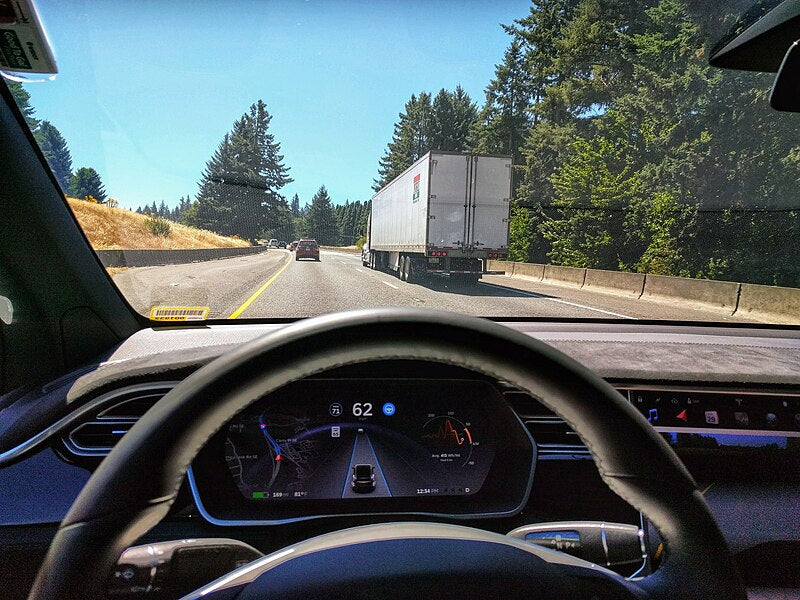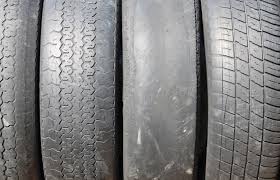Driver Assistance Systems and Advanced Driver Assistance Systems are targeted for a far safer, more comfortable, and more pleasant car drive. The spectrum spans from simple safety functions all the way to the latest state-of-the-art technologies in autonomous driving, in which drivers are supported in many forms of driving situations. We are going to take a peak at different types of DAS and ADAS technologies, how they work, and their benefits.
Adaptive Cruise Control (ACC)

What It Is:
Adaptive cruise control is similar to conventional cruise control except it uses radar and cameras to automatically keep a proper and safe following distance from the vehicle ahead by adjusting your speed to the flow of traffic.
How It Works:
ACC systems constantly monitor the distance to the car ahead. Upon detecting a slower vehicle, it reduces speed to maintain the preset following distance. Once the road clears, the ACC accelerates the car back to the set speed.
Benefits:
- Reduces driver fatigue on long journeys.
- Enhances safety by maintaining a safe distance from other vehicles.
Automatic Emergency Braking (AEB)

What It Is:
A critical safety feature, Automatic Emergency Braking can detect impending collisions and automatically apply the brakes to prevent or mitigate the impact.
How It Works:
AEB systems detect the road ahead using radar, cameras, and sensors for obstruction or oncoming traffic. If impact is likely to be forthcoming, the system warns the driver; if the driver fails to respond adequately, it applies the brakes automatically.
Benefits:
- Reduces the impact of a collision
- Can avoid rear-end collisions—one of the most common types of accidents.
Lane Departure Warning (LDW) and Lane Keeping Assist (LKA)

What They Are:
Lane Departure Warning lets the driver know if the vehicle will begin to leave its lane without using a turn signal. Lane Keeping Assist takes things another step further by gently steering a car back into its lane if lane departure is detected unintentionally.
How They Work:
The LDW monitors cameras for lane markings, and if your vehicle begins drifting(but not that kind of drifting), it will alert you via visual, auditory, or haptic signals. LKA accomplishes this by providing corrective steering input to maintain the car at the center of its lane.
Benefits:
- Enhances driver awareness and reduces the risk of lane departure accidents.
- Assistance in keeping lane discipline is offered, more so during long drives.
Blind Spot Detection (BSD) and Rear Cross Traffic Alert (RCTA)

What They Are:
Blind Spot Detection scans the blind spots on either side of the vehicle and warns the driver of vehicles traveling in those blind zones. The Rear Cross Traffic Alert warns of approaching traffic when backing out of parking spaces.
How They Work:
BSD uses the same radar or ultrasonic sensors mounted on the rear corners of the vehicle to provide the systems that detect vehicles in the blind spots. RCTA scanning occurs using the same sensors for the area behind the vehicle and warns the driver about cross-traffic approaching from either side.
Benefits:
- Reduces blind spot-related accidents.
- Enhances safety when reversing out of parking spaces.
Traffic Sign Recognition (TSR)

What It Is:
It detects road signs and relays information about them on the dashboard or head-up display.
How It Works:
The TSR system recognizes, via cameras and image processing algorithms, the speed limit signs, stop signs, do not enter signs, and displays this information to the driver, usually with visual or audible alerts.
Benefits:
- Obeying the traffic laws.
- Keeps the driver informed of the current speed limit and road regulations, thereby improving situational awareness.
Driver Attention Monitoring System

What It Is:
Driver Attention Monitoring checks the degree of attention that the driver is giving and alerts if it recognizes the first signs of drowsiness or distraction.
How It Works:
DAM systems use a combination of cameras and sensors, tracking the driver's eye movements, head position, and steering behavior. In case of detecting the very first signs of fatigue or distraction, the system alerts the driver with either visual or audible warnings.
Benefits:
- It prevents accidents due to drowsy or distracted driving and hence enhances safety to the driver.
- It encourages safe driving practices.
Automatic Parking Assist

What It Is:
Automatic Parking Assistance makes vehicle parking easier by steering the vehicle into a parking space automatically.
How It Works:
The system uses a combination of sensors, cameras, and ultrasonic devices to detect available parking spaces. The driver will only need to control the accelerator, brake, and shifter while the system steers.
Benefits:
- Reduces stress and difficulty of parking, especially in tight spots.
- Enhanced convenience, security in urban environments
Surround-View Camera System

What It Is:
The Surround-View Camera System offers 360 degrees of visibility around the vehicle to assist in parking and low-speed maneuvering situations.
How It Works:
Cameras mounted at front and rear capture images that are 'stitched' together to create a 'birds-eye view' on the display screen, allowing the driver to see any obstruction and make a precise maneuver.
Benefits:
- Improves visibility and clears blind spots.
- Enables easier parking and maneuvering around tight corners.
Anti-lock Braking System (ABS)

What It Is:
The ABS is a safety system designed to prevent the locking of wheels during braking, thus maintaining tractive contact between the wheels and the road surface. This technology improves vehicle control and helps prevent collisions on slippery surfaces.
How It Works:
This system detects when the ABS sensors show a wheel lock-up and quickly modulates the pressure of the brakes to each wheel to avoid skidding and secure steering control for the driver. This is achieved through a series of quick brake pulses, helping to keep the tires in contact with the road.
Benefits:
- Greatly enhanced steering control during emergency braking
- Minimizes the potential for skidding and accidents on wet or icy road surfaces.
Traction Control System (TCS)

What It Is:
Traction Control is a system designed to avoid a situation at wheel spin during acceleration, mostly on slippery surfaces. This system secures that driving wheels never lose their grip on the ground to assist the vehicle in its stability and grip.
How It Works:
TCS makes use of sensors that supply the wheel speed data to the system, thus continuously monitoring and detecting any wheel slipping. In case of wheel spin, it will reduce engine power or apply light pressure to the brake of the slipping wheels to regain the tires' grip. This is a continuous and instant process, ensuring the best possible grip at all times.
Benefits:
- Improves vehicle stability and control during acceleration.
- Avoids spinouts when on slippery or unequal surfaces, enhancing safety.
Driver Assistance Systems and Advanced Driver Assistance Systems, represent the very front line of safety and innovation. These technologies are being developed further with advanced sensors, AI, and machine learning baked into the creation of smarter, more effective means of transportation on the road. The basic features—ABS, Traction Control—and the new, more sophisticated,systems, including Adaptive Cruise Control and Automatic Emergency Braking, set a core basis for the betterment of our driving experience. Soon you won't be able to buy a car without them.
These systems are only going to continue to blend as time heads further into the future. Stay tuned as we will take a more in-depth look at these technologies that show influence and shape the future of the automotive industry toward a clear pathway to autonomous driving.
Which of the DAS or ADAS features is most valuable to you?
Have you experienced any of these technologies in your vehicle?
Share your thoughts and experiences in the comments below!
Happy Driving!
Main photo source: https://commons.wikimedia.org/wiki/File:Tesla_Autopilot_Engaged_in_Model_X.jpg




